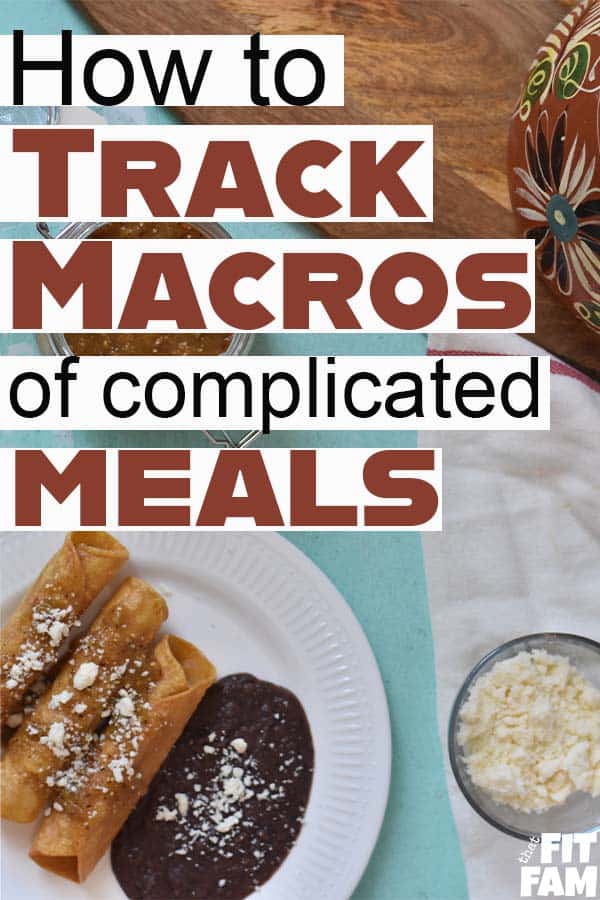Figuring out how to calculate macros for recipes is key in IIFYM. The average person doesn’t want chicken, a side of broccoli and a side of rice for every meal. Although, that is the easiest type of meal to track, it’s not always the tastiest.

Tracking a recipe is going to be more complicated and can be less accurate than tracking simpler foods. But, it’s not impossible.
I touch on calculating macros for recipes or one pot meals in my post on how to weigh your food, but I want to go more in depth.
Tools to calculate macros for recipes
Food scale– These are cheap. I believe mine was about $10 and I picked it up from Target. Here’s a similar one from amazon. Basically, you just want to make sure it weighs in grams as well as ounces AND has a tare function so you can zero out the scale.
Measuring cups– measuring cups that measure in ounces and millilitres are ideal for measuring liquids accurately.

Free MyFitnessPal app or paper, pen & calculator– It doesn’t have to be MyFitnessPal. There are other similar apps, that is just the one we use. If you want to avoid that, you can do it manually. This is actually how I used to track, it just takes more work.
That’s all you need, now let’s dive into how.
How to do it
First, make sure to accurately measure/weigh each ingredient. Eyeballing doesn’t work. Unless it’s something like an egg. That’s fine… or also, zero calorie things like water or hot sauce.
Next, go into MyFitnessPal and create a recipe. Enter in all your ingredients, scanning barcodes when you can.
After the meal is finished cooking, I weigh the finished product in grams. I take the weight of the whole thing (minus the weight of the container it’s in of course) and use that number as my “number of servings” in MyFitnessPal.
Now, you know the amount of calories in each single gram of your meal. You don’t have to measure out what you think is 1 serving. You can just put your plate on the food scale, zero it out, add your food and log “X grams” of your recipe. Voila!
By hand:

Doing it by hand is a pain, but basically add up the fats, carbs, and protein of each ingredient. Divide the total of each category by the number of grams the whole recipe weighs. This will get you the amount of fat, carbs, and protein per gram. Next multiply each category by the number of grams you end up serving onto your plate to get your totals.
Recipes with meat:
The reason I avoid one pot meals, is because it is tough to be accurate when the recipe includes things like meat. Some portions might have more meat than others and thus, more protein or fat.
When I can, I will weigh & log my meat separately. I do this in my tortilla soup recipe. I created a recipe for the broth and add in rotisserie chicken & toppings separate.
My favorite part about IIFYM is that it is not a quick fix. It’s all about slow and steady and hitting your goals in a sustainable way. Because of this, it is 100% okay to have meals that aren’t tracked perfectly accurately.
As long as you’re not doing this for every meal, you should still see progress. If you aren’t, tighten things up and maybe avoid one pot meals when you can. I have a bunch of macro friendly recipes here that are EASY to tweak to your specific macros and easy to log. That’s my go-to most days of the week.

Dom
Wednesday 29th of September 2021
Can this method work if instead of counting grams for my weight, I did it by ounces? My current food scale doesn’t offer a way of counting grams.
Lexi @ That Fit Fam
Wednesday 6th of October 2021
absolutely! Counting in grams is just a little more precise, but as long as you are logging your food in ounces, you can weigh it in ounces =)